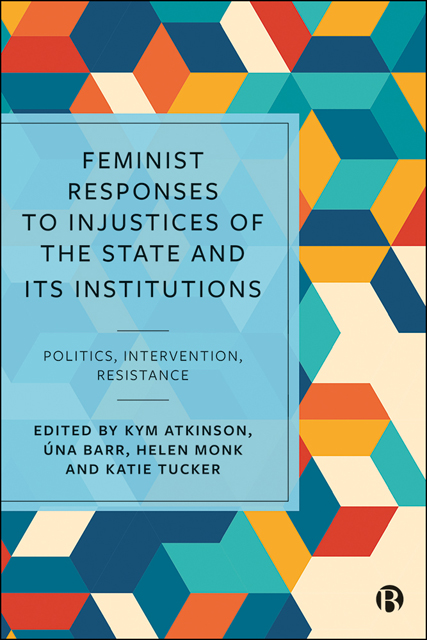 Feminist Responses to Injustices of the State and Its Institutions
Feminist Responses to Injustices of the State and Its Institutions 7 - Sanctuary as Social Justice: A Feminist Critique
Published online by Cambridge University Press: 17 June 2023
Summary
Introduction: sanctuary and gendered subjugation
The concept of sanctuary is complex and – where seeking asylum is concerned – deeply embedded in political ideologies. In a legal sense, it is most contemporarily linked with the 1951 Convention Relating to the Status of Refugees and its 1967 Protocol, if not also a tool to control non-refugee related migration. That one might be subjected to or fear persecution and be provided sanctuary from a state outside of one’s own is a reality entrenched in post-Second World War rights discourse and humanitarianism. In the face of persecution, sanctuary in this sense arguably forms an ideological cornerstone for the fundamental right to life (Article 2, European Convention on Human Rights). Sanctuary therefore remains a contested term, with multiple meanings contemporarily and historically (see Rabben, 2016). For the purposes of this chapter, however, the concept of sanctuary should be understood as a spatialized form of safety, whereby previous subjections to or threats of harm are alleviated, and where one can live free from further harm in the present.
Setting this as a conceptual backdrop, this chapter outlines ways in which the reality of sanctuary is perforated for women seeking asylum in Britain. Women generally comprise two-thirds of the number of people seeking asylum in the UK at any given time (Baillot and Connelly, 2018). Although there is no definitive dataset to evidence the percentage of women who are survivors of sexual violence, refugee women are recognized as having disproportionately experienced high levels of gendered and sexualized abuse (Baillot et al, 2014; Girma et al, 2014; Emejulu and Bassel, 2017). This may be historic abuse during conflict, in camps or asylum centres, at various points of migration, or while in the asylum system itself (Canning, 2014, 2017; Baillot and Connelly, 2018).
Although not prescriptive, survivors of gendered and sexualized violence or sexual torture can experience this as a continuum, or as one-off events from variable social actors (such as militaristic violence, by partners, in detention or by border agents or smugglers; see Kelly, 1988; Canning, 2016, 2017). As one social worker supporting women’s and families cases in the North West of England summarized:
‘A lot of the women that I represented certainly had experienced gendered forms of persecution.
- Type
- Chapter
- Information
- Feminist Responses to Injustices of the State and Its InstitutionsPolitics, Intervention, Resistance, pp. 141 - 158Publisher: Bristol University PressPrint publication year: 2022


